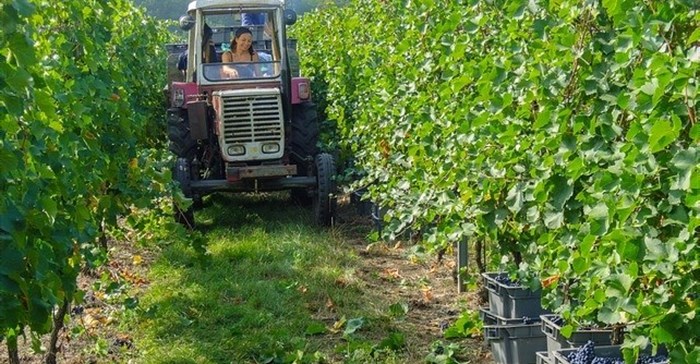
Related



Soil and water: An inseparable partnership in a changing agricultural landscape
Prof Driekie Fourie 4 Dec 2025



Top stories






More news






HR & Management
Kickstart your career: 7 steps to get job-ready in 2026








Despite the challenges faced by wine businesses, the results of PwC's South African wine industry: Insights survey 2015 highlight a number of positive findings and opportunities for the sector."
Africa and Asia have replaced North America and the European Union as the two geographical areas that CEOs consider to be the most important for growth over the short to medium term. In addition, an increase in existing markets and the development of new markets - both locally and internationally - remain at the top of the agenda when CEOs consider growth opportunities.
In 2014, only 15% of CEOs were very confident about revenue growth in the short to medium term, while 22% are of this view in 2015. "Global supply and demand continues to have the biggest influence on businesses' strategy. Land reform has also been placed higher on the agenda than in prior years, with more emphasis on shareholders' expectation when strategy is considered. It is interesting to note that the new B-BBEE scorecard requirements are not regarded as having too much of an influence in the decision-making process," adds Weilbach.
The South African Department of Trade and Industry has made available several support programmes to the industry through its EIP, MCEP and export support programmes. Many organisations have also successfully utilised the Employment Tax Incentive, for which the qualifying criteria are less onerous.
"It is also positive to note that local producers have gained ground on their international counterparts when it comes to environmental awareness," says Weilbach. "In 2014, 80% of international participants had environmental programmes in place while only 52% of local participants engaged in such programmes. By 2015, the local programmes had increased to 70%."
A high 93% of businesses have considered introducing renewable energy programmes, while 56% have not yet implemented such programmes due to the cost implications. Solar, wind and hydro power are considered the most popular projects.
Forecast demand and the ability to manage inventory are areas in which executives believe that technological innovation can be of value. The enhancement of precision farming is also high on the agenda, and it will be interesting to see the role of technology in this area in the future.
Regarding the expectation for wine prices over the short term, only 15% of executives indicated an increase for red wine, while the majority of participants expect white wine prices to remain stable.

Megatrends are sustained global macroeconomic forces of development that impact businesses, economies, societies, cultures and personal lives, defining our future world with its ever-increasing pace of change. These global forces also impact the wine industry.
"Changes in demographics, climate change and resource scarcity, technological advances, accelerating urbanisation and shifts in economic power are all factors that wine businesses should take cognisance of and understand in order for them to be proactive, rather than reactive," says Weilbach. "The wine industry will have to ensure that it understands consumer segmentation and demographics in order to tap into the global market opportunity. Regarding advancements in technology, there will be no excuse for the wine industry not to understand and utilise the latest technological innovations in future," he concludes.
Despite record harvests in 2014 in some areas, the average tons pressed by participating cellars increased by only 2.3%, driven mainly by increased red grape production. Although the white grape harvest contributed slightly less to the national crop in 2014, it continued to be almost twice the size of the red grape harvest.
Although provisional net revenue per ton for red grapes declined by 4%, it remains above the R3,000 per ton level, while the increase in net revenue per ton for white grapes was insignificant. Revenue per producing hectare for white varieties continued to increase, edging towards the R43,000 level. Costs per producing hectare have caught up and exceeded the net revenue for red grape hectares.
It comes as no surprise that electricity and water, and chemicals continue to remain the pressing costs for businesses, while finance charges have also started to increase, on the back of the rising interest rate cycle.
The second competitiveness index has been expanded to include additional data, as well as key business and financial drivers and benchmarks that are important for producers and their members. The drivers are: the average age of vineyards; infrastructure replacement ratio; debt-equity ratio; interest cost per ton; marketing spend; pay-out ratio; and pay-out tempo. The results of the competitiveness index are very interesting in that some businesses performed very well in a number of areas, whilst lagging behind in others.
"It is encouraging to note that more cellars have a dedicated HR strategy in place. Furthermore, cellars are taking steps to develop and implement a succession plan for the future," comments Weilbach. "It is also promising to see that the majority of participating cellars (81%) indicated that they would maintain their focus on promoting workplace diversity over the next 12 months. Achieving a competitive advantage through the management of diversity is key for the wine industry, and it is clear that effective leadership is needed for it to be successfully implemented."
However, cellars are still finding it a challenge to attract the right talent, especially in the fields of senior management, professionals and technicians. "This indicates the need for the industry as a whole, to put appropriate HR strategies in place to ensure that the correct talent is developed and sourced proactively," says Weilbach.
The South African wine and brandy industry developed the need for a comprehensive industry-wide strategic exercise to help it reach a desirable future state by 2025. It was envisaged that the exercise should include a robust and adaptable approach to drive profitability, global competitiveness and sustainability. A WISE task team was created, consisting of representatives from various industry bodies as well as a range of role-players throughout the wine and brandy value chain. Wider consultation in the industry formed a crucial part of the process.
Weilbach indicates that the WISE task team has identified six work streams which it will address through ten projects. "The ten projects were repackaged into four toolbox items that create an enabling environment for 'business as usual' as well as six game changers, which are new projects that are expected to change the industry's landscape," he concludes.